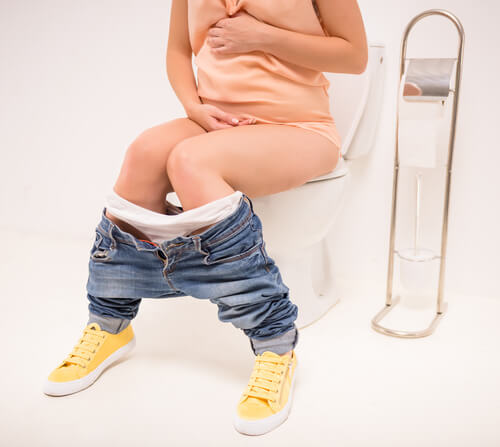Enema in Childbirth

During pregnancy, future moms usually have lots of questions and concerns, among them being the famous enema in childbirth.
When this moment gets closer, their thoughts are centered around how delivery will be, as well as the risks the mother will have, the baby’s health, myths and beliefs, among many other things.
One of the fears that future mothers have in regards to giving birth is the application of enema. Is it necessary or not?
What Is an Enema?
It is when they introduce laxatives to the anal canal to empty out the colon. It takes effect in about 20 minutes.
Concerns among Mothers
There are many things to worry about for a mother that’s about to have a baby. One of her worries is about defecating during childbirth.
It’s common that when pushing, all of that force will also expel feces.
The simple fact is that defecating during childbirth could be embarrassing and uncomfortable. Imagining this scenario in the presence of medical personnel (who are normally strangers to the mother) could be a very real stressor for her.
Although everyone that goes through childbirth is usually prepared, it’s normal to want to be prepared for every possible outcome. Many future mothers think that applying an enema in childbirth is a good option.
The Initial Phase of Childbirth
When it comes time to deliver the baby, it’s possible that the body will naturally feel the need to defecate.
If this happens during the first part of labor, it’s no problem at all. The first contractions will make you want to go to the bathroom and the mother can do it normally.
Additionally, if the mother has regulatory defecating patterns, the enema isn’t necessary.
Enema in childbirth has been a common delivery practice for many years.
Administering an enema at the health center as soon as it’s time to have a baby was a normal practice. They did this mainly to prevent infections.

It was believed that, if the woman defecated when delivering the baby, the baby would be in contact with the feces and thus they would both be at risk of infections.
They also thought that applying the enema stimulated delivery and reduced the time in labor.
When to Use Enema in Childbirth
- When the mother is constipated or when the amount of accumulated feces is high, delivery could be difficult.
- The way to find out is through a technique. If the doctor or midwife can feel the retained feces on the back vaginal wall, it’s recommended to apply it.
- Enema in childbirth is also recommended if the mother is afraid of defecating. This causes stress and prevents her from calmly experiencing this moment.
The mother should keep in mind that the enema is not obligatory, unless your OB/GYN says that it is. Stay informed as much as possible.
You have to remember that childbirth is a natural event. This means there might be unpleasant moments, but they are perfectly normal.
Perineal Shaving
Along with applying an enema during childbirth, it was also very common to shave the hair around the vagina.
The main reason was because they thought that by eliminating the hair, they were also reducing the risk of infection during the episiotomy.
The episiotomy consists of an incision that the doctor does in the perineum area, from the vulva to the anus.
It’s a surgical practice that has the end goal of extending the birth canal to prevent tearing. It also aims to make the delivery process easy, both for the mother and the baby.
Both the enema and shaving are related to episiotomy. Research from the last decade have questioned these three practices, making them all less frequent.
The arguments are that they don’t represent great benefits for the mother or child. They don’t prevent diseases, they don’t improve recovery times nor reduce any type of risk.
Therefore, the mother only needs to apply them at home if they’re necessary. The mother needs to have complete confidence in the professional that accompanies her during birth. This will help her feel comfortable and safe.
During pregnancy, future moms usually have lots of questions and concerns, among them being the famous enema in childbirth.
When this moment gets closer, their thoughts are centered around how delivery will be, as well as the risks the mother will have, the baby’s health, myths and beliefs, among many other things.
One of the fears that future mothers have in regards to giving birth is the application of enema. Is it necessary or not?
What Is an Enema?
It is when they introduce laxatives to the anal canal to empty out the colon. It takes effect in about 20 minutes.
Concerns among Mothers
There are many things to worry about for a mother that’s about to have a baby. One of her worries is about defecating during childbirth.
It’s common that when pushing, all of that force will also expel feces.
The simple fact is that defecating during childbirth could be embarrassing and uncomfortable. Imagining this scenario in the presence of medical personnel (who are normally strangers to the mother) could be a very real stressor for her.
Although everyone that goes through childbirth is usually prepared, it’s normal to want to be prepared for every possible outcome. Many future mothers think that applying an enema in childbirth is a good option.
The Initial Phase of Childbirth
When it comes time to deliver the baby, it’s possible that the body will naturally feel the need to defecate.
If this happens during the first part of labor, it’s no problem at all. The first contractions will make you want to go to the bathroom and the mother can do it normally.
Additionally, if the mother has regulatory defecating patterns, the enema isn’t necessary.
Enema in childbirth has been a common delivery practice for many years.
Administering an enema at the health center as soon as it’s time to have a baby was a normal practice. They did this mainly to prevent infections.

It was believed that, if the woman defecated when delivering the baby, the baby would be in contact with the feces and thus they would both be at risk of infections.
They also thought that applying the enema stimulated delivery and reduced the time in labor.
When to Use Enema in Childbirth
- When the mother is constipated or when the amount of accumulated feces is high, delivery could be difficult.
- The way to find out is through a technique. If the doctor or midwife can feel the retained feces on the back vaginal wall, it’s recommended to apply it.
- Enema in childbirth is also recommended if the mother is afraid of defecating. This causes stress and prevents her from calmly experiencing this moment.
The mother should keep in mind that the enema is not obligatory, unless your OB/GYN says that it is. Stay informed as much as possible.
You have to remember that childbirth is a natural event. This means there might be unpleasant moments, but they are perfectly normal.
Perineal Shaving
Along with applying an enema during childbirth, it was also very common to shave the hair around the vagina.
The main reason was because they thought that by eliminating the hair, they were also reducing the risk of infection during the episiotomy.
The episiotomy consists of an incision that the doctor does in the perineum area, from the vulva to the anus.
It’s a surgical practice that has the end goal of extending the birth canal to prevent tearing. It also aims to make the delivery process easy, both for the mother and the baby.
Both the enema and shaving are related to episiotomy. Research from the last decade have questioned these three practices, making them all less frequent.
The arguments are that they don’t represent great benefits for the mother or child. They don’t prevent diseases, they don’t improve recovery times nor reduce any type of risk.
Therefore, the mother only needs to apply them at home if they’re necessary. The mother needs to have complete confidence in the professional that accompanies her during birth. This will help her feel comfortable and safe.
All cited sources were thoroughly reviewed by our team to ensure their quality, reliability, currency, and validity. The bibliography of this article was considered reliable and of academic or scientific accuracy.
- Cuervo, Luis Gabriel & N Rodríguez, M & Delgado, Martha. (2000). Enemas during labor. Cochrane database of systematic reviews. [Online]. 3. CD000330. 10.1002/14651858.CD000330.
- WHO recommendation on administration of enema for reducing the use of labour augmentation (May 2014). The WHO Reproductive Health Library; Geneva: World Health Organization.
This text is provided for informational purposes only and does not replace consultation with a professional. If in doubt, consult your specialist.








